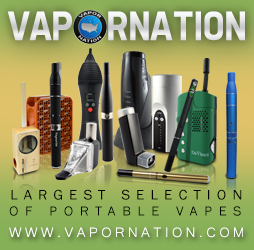Growing Inside, Outside, Hydroponically and in Soil

The advantages of growing in soil indoors
The difference here is similar to the difference between indoor and outdoor cultivation. Soil growing requires less equipment, investment and, generally, less work to control the various factors influencing growth.
The only specialist equipment required for the simplest indoor soil set-up would be seeds, organic nutrients, a light and a timer. The remaining equipment – soil, pots, fans, reflective materials and such should be easily available in most countries.
As an organic compound, soil is less sensitive to changes and small variations than a synthetic medium like rockwool. It could be called a self-regulating environment. Thus, pH testing equipment is usually not required.
Similarly, organic nutrients are gentler to plants than the concentrated salts and minerals of hydroponic feed mixtures. Therefore, while it is still possible to over-fertilize an organic system, such a mistake is less likely to ‘burn’ or kill plants. An EC meter is not required for soil growing
In short, soil growing is easier and more forgiving of growers’ mistakes. Therefore it is a highly advisable method for the first time indoor grower.
The advantages of growing hydroponically indoors
Indoor cultivation allows more control over a plant’s life cycle than outdoor. In the same way, hydroponic cultivation allows the grower an even greater level of control.
Since plants in a hydroponic setup are growing in a synthetic, neutral medium the grower is able to dictate exactly which nutrients are given to a plant, and at what levels. Of course, this requires more care than organics and usually necessitates the use of a pH meter (to measure acidity in water) and an EC meter (to measure the level of nutrient in water by means of its Electrical Conductivity).
Hydroponic growing mediums are less bulky and heavy than soil, often easier to handle and possibly easier to dispose of. Pests and fungus are less likely to flourish in rockwool or similar mediums, and are almost never endemic to newly bought synthetic mediums.
Hydroponic nutrients, since they are highly concentrated, take up less space than organics, especially for large crops. They are usually pre-mixed and do not require the grower to supplement them or combine several different formulas. Also, they will often smell less than organic nutrients.
In short, the more in-depth control available with hydroponics, when managed effectively, allows for a bigger, more potent and sometimes even faster crop. While such systems are not recommended for first-time indoor growers, those who have experienced success with soil cultivation indoors may wish to try this as the next step in refining their technique.
The advantages of growing outdoors
Outdoor cultivation requires less equipment, expertise and labour.
For the first few weeks of life, outdoor plants need the same care and attention as indoor ones. However, once a few basics have been well established, outdoor plants may be left (in a good, sunny spot) to take care of themselves. They may need to be regularly watered and fed and, occasionally, pruned but most of their development will be accomplished simply by allowing them to grow over spring and summer.
This feature of outdoor cultivation is what makes ‘guerrilla growing’ possible. Established plants may be placed outside in remote or wild areas and left to their own devices throughout the growing season. The guerrilla grower need only visit them a few times in this period, or even just the once, at harvest time.
Outdoor plants will usually yield more than indoor ones. This is simply because they are able to grow larger. Few indoor setups are able accommodate plants larger than 180cm. Assuming that detection is not a problem, outdoor plants may comfortably grow to 2 or 3m in height. It is possible for a single plant of this size to produce 500g or more of dried bud.
Germinating seeds early in the growing season (March or April in the Northern hemisphere) will allow your plants a long vegetative period before flowering is triggered by the shorter days of late summer.
Some people prefer the taste and effect of organically grown cannabis. Many cannabis lovers insist they can easily differentiate between buds grown with soil and sun and those produced with hydroponics and grow-lights. This, however may simply be the result of their smoking over-fertilized indoor cannabis, or even the fact that indoor buds can taste very different, due to their containing an uncommonly high level of THC that is simply not attainable outdoors.
The author is a Cannabis enthusiast who is committed to promote the environmental and social benefits of Cannabis in general and Medicinal Marijuana seeds in particular. Please follow the link for more information on Cannabis and Hemp.









